Antihistamine Selector
Recommended Antihistamine
Comparison Table
| Brand | Onset | Duration | Sedation Risk | Cost (Monthly) |
|---|
Quick Takeaways
- Xyzal (levocetirizine) offers 24‑hour relief with low sedation risk.
- Claritin (loratadine) and Allegra (fexofenadine) are also non‑drowsy, but differ in onset speed.
- Zyrtec (cetirizine) is the most budget‑friendly, yet may cause mild drowsiness for some.
- Benadryl (diphenhydramine) provides rapid relief but guarantees drowsiness and anticholinergic side‑effects.
- Choosing the right antihistamine depends on age, dosing convenience, price, and how you react to sedation.
What Is Xyzal?
When it comes to seasonal allergies, Xyzal is a brand‑name antihistamine that contains the active ingredient levocetirizine, a second‑generation H1 blocker designed to reduce sneezing, itching and watery eyes. Levocetirizine works by selectively binding to peripheral H1 receptors, preventing histamine from triggering the classic allergy cascade.
Because it stays mostly out of the brain, levocetirizine causes far less drowsiness than older, first‑generation antihistamines. In the UK, Xyzal is available by prescription for adults and children over 6years, with typical doses of 5mg once daily.
Levocetirizine - The Generic Backbone
Levocetirizine is the active enantiomer of cetirizine, offering a slightly higher affinity for the H1 receptor. Clinical trials in 2023 showed a mean onset of symptom relief within 60minutes and a duration of at least 24hours. Its bioavailability is around 95% and it is eliminated primarily via the kidneys, making dosage adjustment unnecessary for most healthy adults.
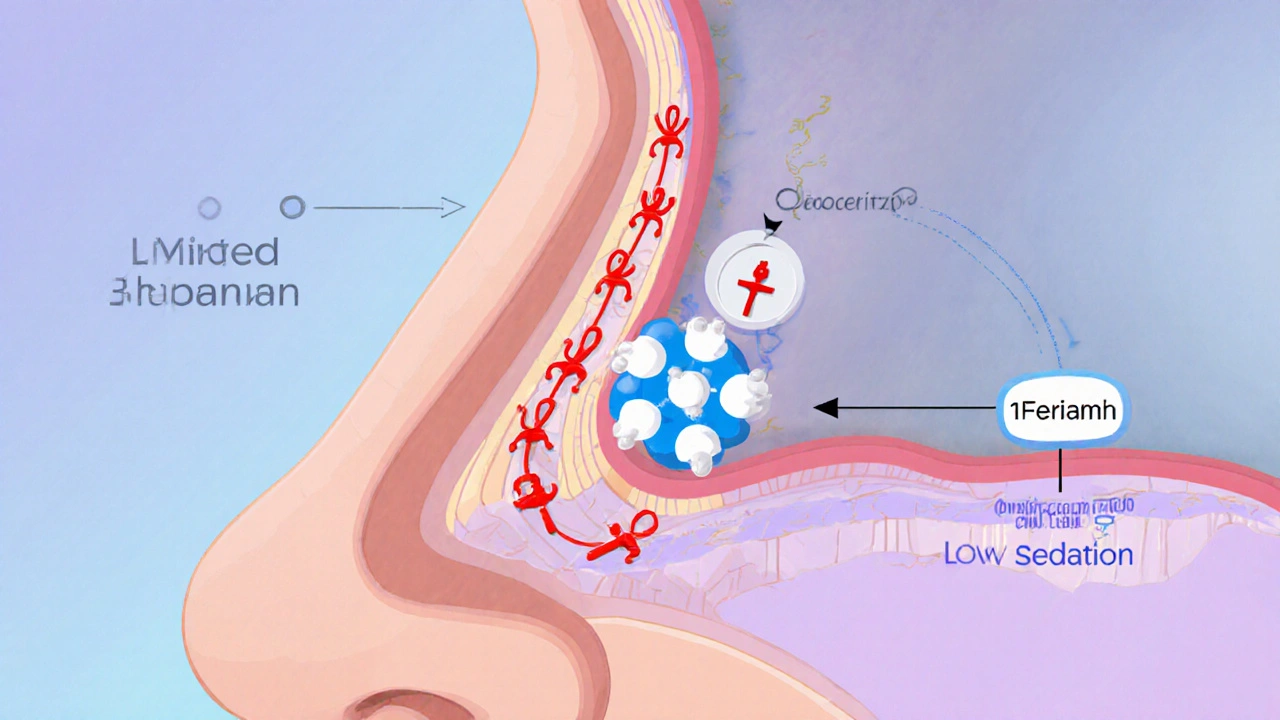
Popular Alternatives at a Glance
Below are the most common over‑the‑counter (OTC) and prescription antihistamines you’ll encounter in UK pharmacies.
- Claritin - brand name for loratadine, a second‑generation antihistamine
- Zyrtec - brand name for cetirizine, another second‑generation drug
- Allegra - brand name for fexofenadine, known for virtually no sedation
- Benadryl - brand name for diphenhydramine, a first‑generation antihistamine
Side‑by‑Side Comparison
| Brand | Generic | Drug Class | Typical Dose (UK) | Onset of Relief | Duration | Sedation Risk | OTC Status | Approx. Monthly Cost (GBP) |
|---|---|---|---|---|---|---|---|---|
| Xyzal | Levocetirizine | Second‑gen H1 blocker | 5mg once daily | ~1hour | 24hours | Low | Prescription | £12‑£15 |
| Claritin | Loratadine | Second‑gen H1 blocker | 10mg once daily | ~1‑2hours | 24hours | Low | OTC (pharmacy‑only) | £6‑£9 |
| Zyrtec | Cetirizine | Second‑gen H1 blocker | 10mg once daily | ~30‑60minutes | 24hours | Moderate (≈10% report drowsiness) | OTC | £5‑£8 |
| Allegra | Fexofenadine | Second‑gen H1 blocker | 180mg once daily | ~1‑2hours | 24hours | Very Low | OTC | £7‑£11 |
| Benadryl | Diphenhydramine | First‑gen H1 blocker | 25mg every 4‑6hours (max 150mg) | ~15‑30minutes | 4‑6hours | High | OTC | £4‑£6 |
How to Pick the Right Antihistamine for You
Rather than asking "which drug is best?", focus on three personal factors:
- Need for non‑sedation. If you drive or operate machinery, stick to Xyzal, Claritin, Allegra, or Zyrtec (if you tolerate mild drowsiness).
- Speed of relief. Benadryl wins on speed, but its sedation may outweigh the benefit for daytime use. Zyrtec offers a decent mix of quick onset and low sedation for many users.
- Cost and accessibility. OTC options like Claritin, Zyrtec, and Allegra avoid the need for a GP visit. Xyzal’s prescription status adds a small administrative hurdle but may be worth it for those who experienced breakthrough symptoms on cheaper drugs.
For children under 6years, pediatric formulations of cetirizine (Zyrtec) and levocetirizine (Xyzal) are approved, whereas fexofenadine is only licensed from age12 in the UK.
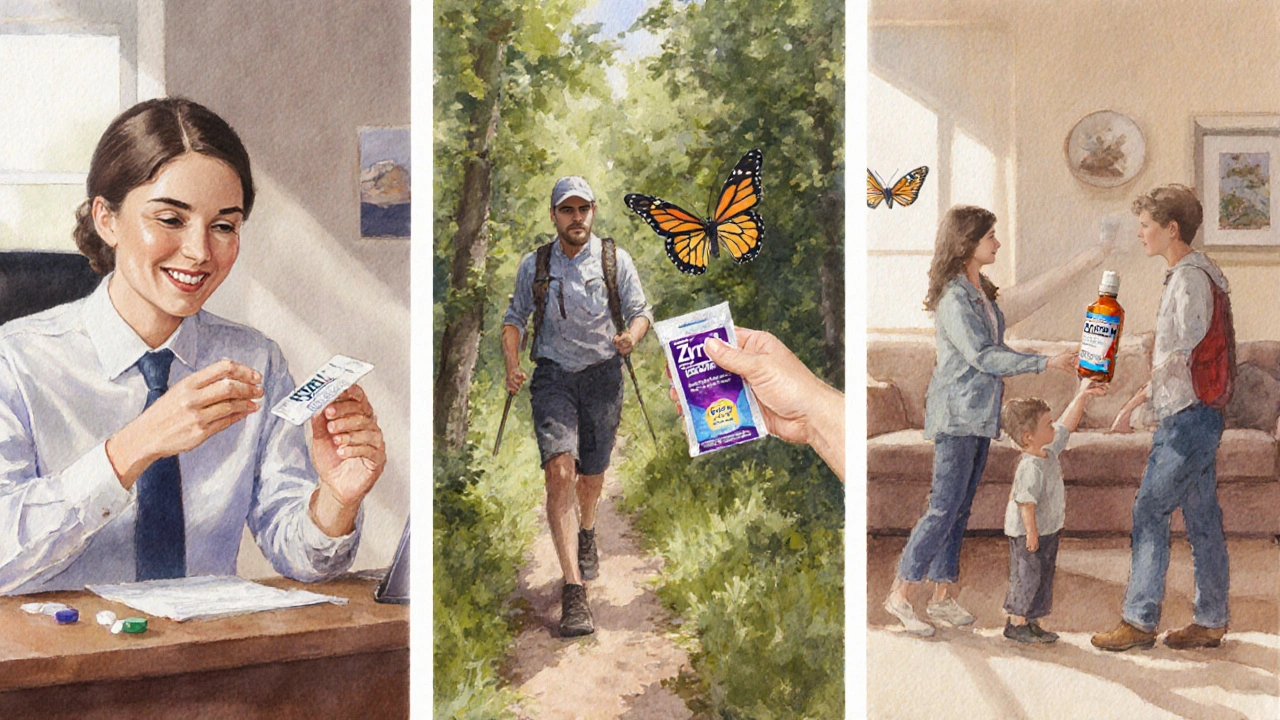
Best‑Fit Scenarios
- Day‑time office workers: Xyzal or Allegra - virtually no drowsiness.
- Weekend hikers needing rapid relief: Zyrtec (fast onset) or a single dose of Benadryl if you can rest afterward.
- Budget‑conscious families: Zyrtec or generic cetirizine tablets, which drop below £5 per month.
- Patients with kidney impairment: Claritin is cleared hepatically and may be safer; dose adjustment needed for levocetirizine.
Practical Tips & Common Pitfalls
1. Don’t double‑dose to chase faster relief. All second‑generation antihistamines reach peak plasma within 1‑2hours; extra pills only increase side‑effects. 2. Watch for drug interactions. Levocetirizine can increase plasma levels of theophylline and certain antifungals. Zyrtec may interact with alcohol, intensifying sedation. 3. Stay consistent. Antihistamines work best when taken at the same time each day, maintaining steady blood levels. 4. Consider seasonal timing. Starting medication a week before pollen spikes cuts breakthrough symptoms by up to 30% (UK pollen forecast 2024 study). 5. Read the label for pediatric dosing. A common mistake is giving an adult tablet to a child; many brands now offer 5mg chewables for kids.
Frequently Asked Questions
Can I take Xyzal and Zyrtec together?
No. Both contain antihistamines that act on the same H1 receptors. Combining them raises the risk of side‑effects without adding benefit. If one isn’t working, switch to the other after a 24‑hour wash‑out.
Is Xyzal safe during pregnancy?
Current NICE guidance (2023) lists levocetirizine as Category B2, meaning animal studies show no risk but human data are limited. Discuss with your GP; many clinicians still prescribe it when allergy symptoms are severe.
Why does Benadryl make me sleepy while Xyzal doesn’t?
Benadryl is a first‑generation antihistamine that crosses the blood‑brain barrier, blocking central H1 receptors and causing sedation. Xyzal’s second‑generation molecule is too polar to enter the brain in significant amounts, so it stays focused on peripheral sites.
How long does it take for Xyzal to start working?
Most patients notice a reduction in sneezing and nasal itch within 45‑60 minutes. Full 24‑hour protection is achieved after the first dose reaches steady‑state, usually after the second or third day of daily use.
Can I use Xyzal for chronic urticaria (hives)?
Yes. Levocetirizine is approved for chronic spontaneous urticaria and often works better than cetirizine because of its higher receptor affinity. Doses up to 10mg daily are sometimes prescribed under specialist supervision.
Next Steps
If you’ve identified a preferred alternative, check whether you need a prescription (Xyzal) or can simply pick it up at your local pharmacy (Claritin, Zyrtec, Allegra, Benadryl). For persistent symptoms that don’t improve after two weeks of daily use, schedule a GP appointment - there could be an underlying condition like allergic rhinitis or eczema requiring additional treatment.
Keep this guide handy when you’re in the pharmacy; comparing the key attributes side‑by‑side will help you ask the right questions and avoid costly trial‑and‑error.

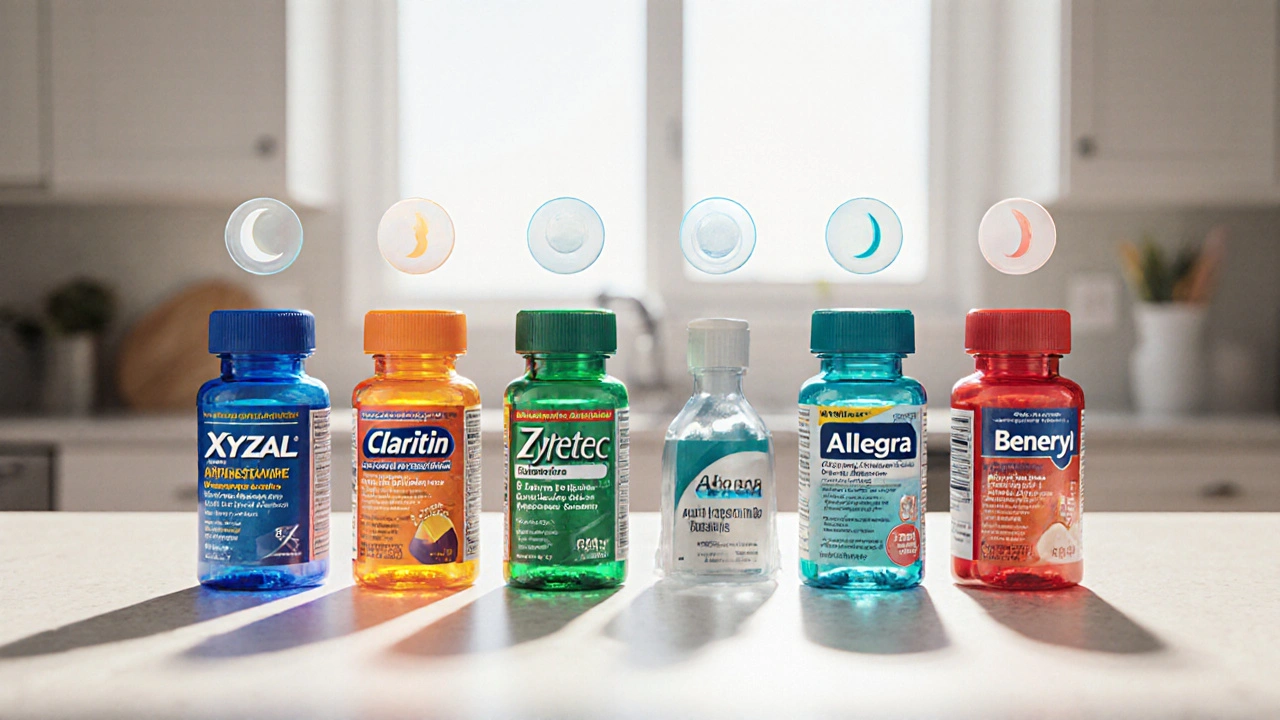



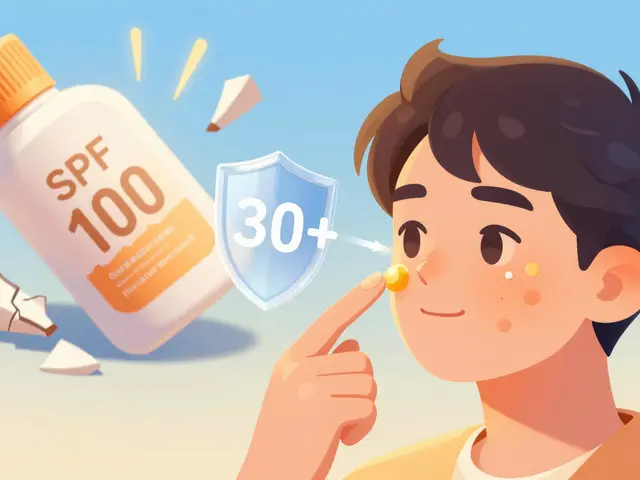
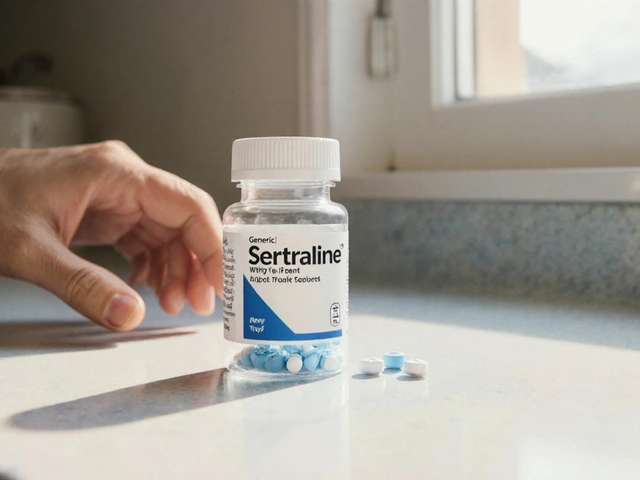
abhishek agarwal
October 6, 2025 AT 17:28